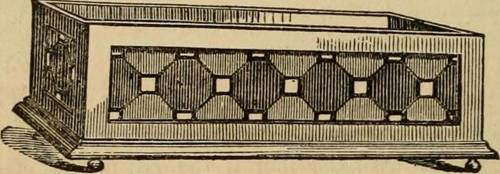
FAQ About Indoor Plant Care for Frequent Travelers

What are the best low-maintenance indoor plants for frequent travelers?
Some of the best low-maintenance indoor plants for those who travel often include succulents like aloe vera and jade plants, cacti, ZZ plants, and snake plants. These plants require minimal watering and can survive in a range of light conditions, making them ideal for travelers.

How can I automate watering my indoor plants while I'm away?
There are several ways to automate watering your indoor plants, such as using self-watering pots, drip irrigation systems, or smart plant watering devices that connect to your home automation system. These options help ensure your plants receive water regularly without manual intervention.

What preparations should I make for my indoor plants before a trip?
Before leaving on a trip, you should water your plants thoroughly, ensure they are not exposed to direct sunlight, apply a layer of mulch to retain moisture, and check for any pest issues. You might also consider relocating plants to a cooler area to reduce the rate of water evaporation.

Can I use artificial lights for my indoor plants while traveling?
Yes, artificial lights such as LED grow lights can be set up on timers to ensure your indoor plants receive adequate light while you're away, especially in areas with insufficient natural light.

What should I do if I notice pests on my indoor plants before travel?
If you notice pests on your indoor plants before leaving for a trip, it is crucial to treat them immediately. Use appropriate insecticides or natural remedies like neem oil. Ensure you remove any severely infected leaves to prevent the spread of pests.

How long can most indoor plants survive without watering?
Most indoor plants can survive one to three weeks without watering, depending on the plant species, pot size, and environmental conditions. Some, like succulents, can last even longer due to their water-storing capabilities.

Is it advisable to move my indoor plants before traveling?
Moving your indoor plants can be beneficial if it means placing them in an area with better temperature control and indirect lighting. This can help reduce stress and water consumption while you're away.

Are there any smart plant care devices for travelers?
Yes, there are several smart plant care devices designed for travelers. These include app-controlled watering systems, smart plant monitors that track soil moisture, light, and temperature levels, and self-watering pots. They can be great assets in managing plant care remotely.

What are some signs that my indoor plants are overwatered when I return from travel?
Signs of overwatering in indoor plants include yellowing leaves, root rot, mold on the soil surface, and standing water at the bottom of the pot. It's important to address these issues promptly by reducing water intake and improving drainage.

How can I ensure my indoor plants get the right humidity levels during my absence?
To maintain appropriate humidity levels, especially for tropical plants, you can use a humidifier or place a tray of water near your plants. Grouping plants together can also help create a microenvironment with higher humidity.

Should I prune my indoor plants before traveling?
Pruning your indoor plants before traveling can be beneficial as it helps reduce the plant's energy requirements and minimizes the risk of disease and pest infestation. Just ensure not to over-prune, as this can stress the plant.

What are self-watering pots, and how do they work?
Self-watering pots have a reservoir at the bottom that holds water. The plant's roots draw water through a wick or the soil itself as needed. This system helps maintain consistent moisture levels and is ideal for travelers.

Can succulents survive on their own for extended periods?
Yes, succulents are highly adaptable plants that can survive for long periods without water, often several weeks to a month. They store water in their thick leaves and can tolerate various lighting conditions, making them excellent choices for frequent travelers.

How can I set a schedule to check on my plants after traveling?
After returning from travel, set a regular schedule to check on plant health, including watering, checking for pests, and adjusting lighting. Weekly inspections can help maintain plant health and catch any issues early.

What is a drip irrigation system, and is it suitable for indoor plants?
A drip irrigation system delivers water directly to the plant's root zone through a network of tubing and emitters, reducing water waste. It is suitable for indoor plants, especially when you are away, as it can be set on a timer.

How do I choose the right size of pots for my indoor plants as a traveler?
Choosing the right pot size is crucial, as larger pots can hold more soil and moisture, reducing the frequency of watering. Ensure the pot has good drainage to prevent waterlogging and root rot while you're away.

Is using a plant sitter a good option for frequent travelers?
Yes, hiring a plant sitter can be a good option for comprehensive plant care while you're away. They can water, adjust lighting conditions, and check for pests, ensuring plants remain healthy during longer absences.

What types of potting soil are best for low-maintenance indoor plants?
For low-maintenance indoor plants, using well-draining soil is essential. A cactus or succulent mix is excellent for these plants, while a standard potting mix with added perlite can work well for others by improving drainage.

Are there any mobile apps to help monitor plant care for travelers?
Yes, there are several mobile apps available that can assist travelers in monitoring plant care. These apps offer features like watering reminders, plant care tips, and connectivity with smart plant care devices for remote management.

What are the common mistakes to avoid when preparing indoor plants before a trip?
Common mistakes include overwatering just before leaving, placing plants in direct sunlight, not checking for pests, and using non-draining pots. Each of these can cause significant problems, so it's essential to prepare carefully and appropriately.
